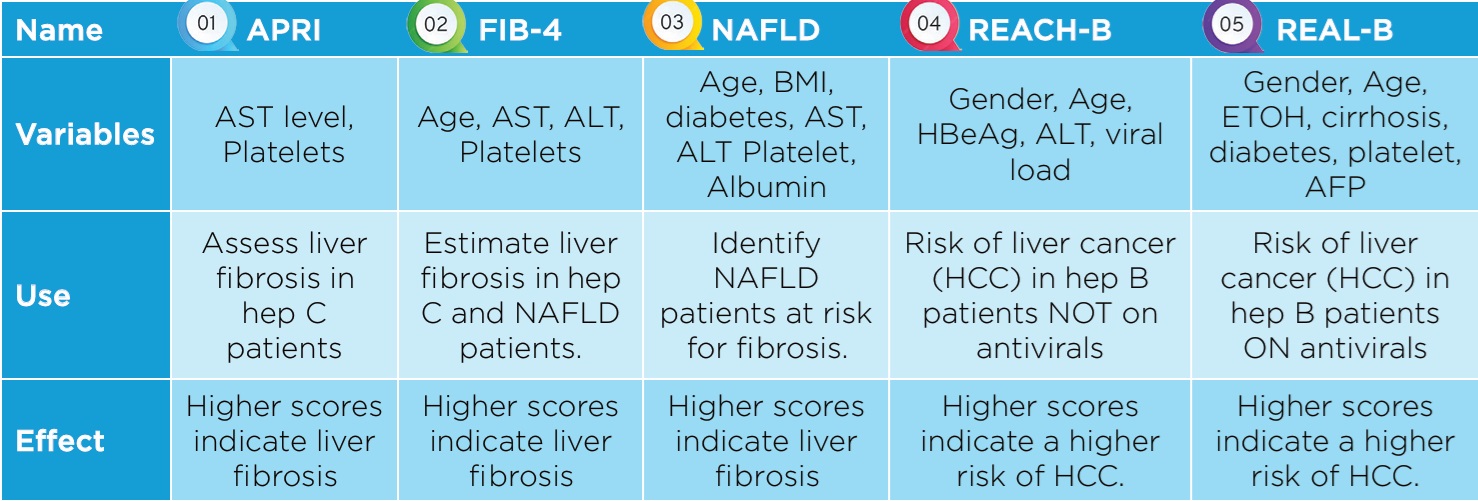GP Tools
As a gastroenterologist, I understand the vital role general practitioners play in managing gastrointestinal health. This page offers a range of tools and resources designed to support you in providing the best possible care to your patients. Here, you’ll find evidence-based guidelines, quick-reference materials, and diagnostic aids tailored to meet the practical needs of GPs. Whether you're seeking the latest updates on treatment protocols or simple tools to streamline patient assessment, this hub is here to help you navigate the complexities of gastroenterology with confidence and ease.
How to refer:
Feel free to contact me if you have any patient questions. Referral is easy using the details to the right. Urgent referrals accepted.

Calculators
Here are the most common used calculators for patients with liver disease and hepatitis. In this overview you can see which information is required in the calculators and in which scenario they are helpful

1: APRI Calculator
The Aspartate Aminotransferase to Platelet Ratio Index (APRI) test is a valuable, non-invasive tool used to assess liver fibrosis and potential cirrhosis, particularly in patients with hepatitis C. By analyzing the ratio of AST to the patient's platelet count, the APRI score offers a quick, cost-effective method to gauge fibrosis levels without requiring a liver biopsy. Scores <0.5 indicate no cirrhosis, Indeteminate scores 0.5-1.5 may need a fibroscan, >1.5 indicates likely advanced fibrosis. Click to go to calculator

2: FIB-4 Score
The FIB-4 Score is a widely used, non-invasive tool for estimating liver fibrosis in patients with chronic liver diseases, particularly in those with hepatitis B, hepatitis C, and non-alcoholic fatty liver disease (NAFLD). By combining patient data, including age, AST and ALT levels (liver enzymes), and platelet count, the FIB-4 score provides a quick and reliable assessment of liver fibrosis.Scores <1.45 indicate no cirrhosis, Indeteminate scores 1.45-3.25 may need a fibroscan, >3.25 indicates likely advanced fibrosis. * Click to go to calculator

3: NAFLD score
The NAFLD Fibrosis Score is a specialized tool designed to assess the likelihood of advanced fibrosis in patients with non-alcoholic fatty liver disease (NAFLD). By integrating routine clinical and laboratory data—such as age, BMI, diabetes status, liver enzymes (AST and ALT), platelet count, and albumin levels. Scores <1.45 indicate no cirrhosis, Indeteminate scores 1.45-3.25 may need a fibroscan, >3.25 indicates likely advanced fibrosis. * Click to go to calculator

4: REACH-B score
The REACH-B Score is a predictive tool specifically designed for patients with chronic hepatitis B. It helps estimate the risk of developing hepatocellular carcinoma (HCC) over time, based on factors like age, gender, hepatitis B viral load, ALT levels, and hepatitis B e-antigen status. This non-invasive score is particularly valuable for guiding long-term management and surveillance decisions in patients with hepatitis B. Scores greater than 9 requires HCC screening and commencement of antiviral treatment. * Click to go to calculator

5: REAL-B Score
The REAL-B Score is a clinical tool developed to assess the risk of hepatocellular carcinoma (HCC) in patients undergoing antiviral treatment for chronic hepatitis B. This scoring system takes into account key factors, such as age, gender, cirrhosis status, and antiviral therapy, to provide an individualized risk assessment for HCC. By identifying patients who may be at a higher risk, the REAL-B Score supports healthcare providers in making informed decisions about surveillance intensity. Scores greater than 4 requires HCC screening * Click to go to calculator
